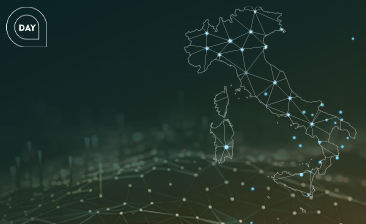
Acea for World Energy Saving Day
As an integral part of its Internal Control and Risk Management System, the Acea Group has set up an Enterprise Risk Management (ERM) framework, with a view to integrating the risk management process on an ongoing basis.
The aim of ERM is to guarantee an effective identification, analysis and control of the main risks to which the Acea Group, owing to the nature of its business and the strategies adopted, is potentially exposed, ensuring that the Group’s overall exposure is consistent with the Business Plan and Sustainability objectives.
The ERM Framework, which aims to enhance the integrated vision of risks and their proactive management, is intended to:
Find out more about our integrated strategy
The Risk Model
The Risk Model, which reflects the array of risk categories to which the Acea Group is potentially exposed, is derived from a careful analysis of both the socio-economic and business context in which the Group operates and the Business and Sustainability Plan objectives.
The Risk Model’s logic of representation provides for various risk type aggregation levels, with increasing granularity, based on the following elements:
The methodology and tools used to identify the risks and assess their severity are developed with increasing attention to ESG aspects. During the risk assessment process, which is performed at least once per year, the risk owners, when identifying risk scenarios, also highlight the potential impacts thereof with regard to material issues for Acea.
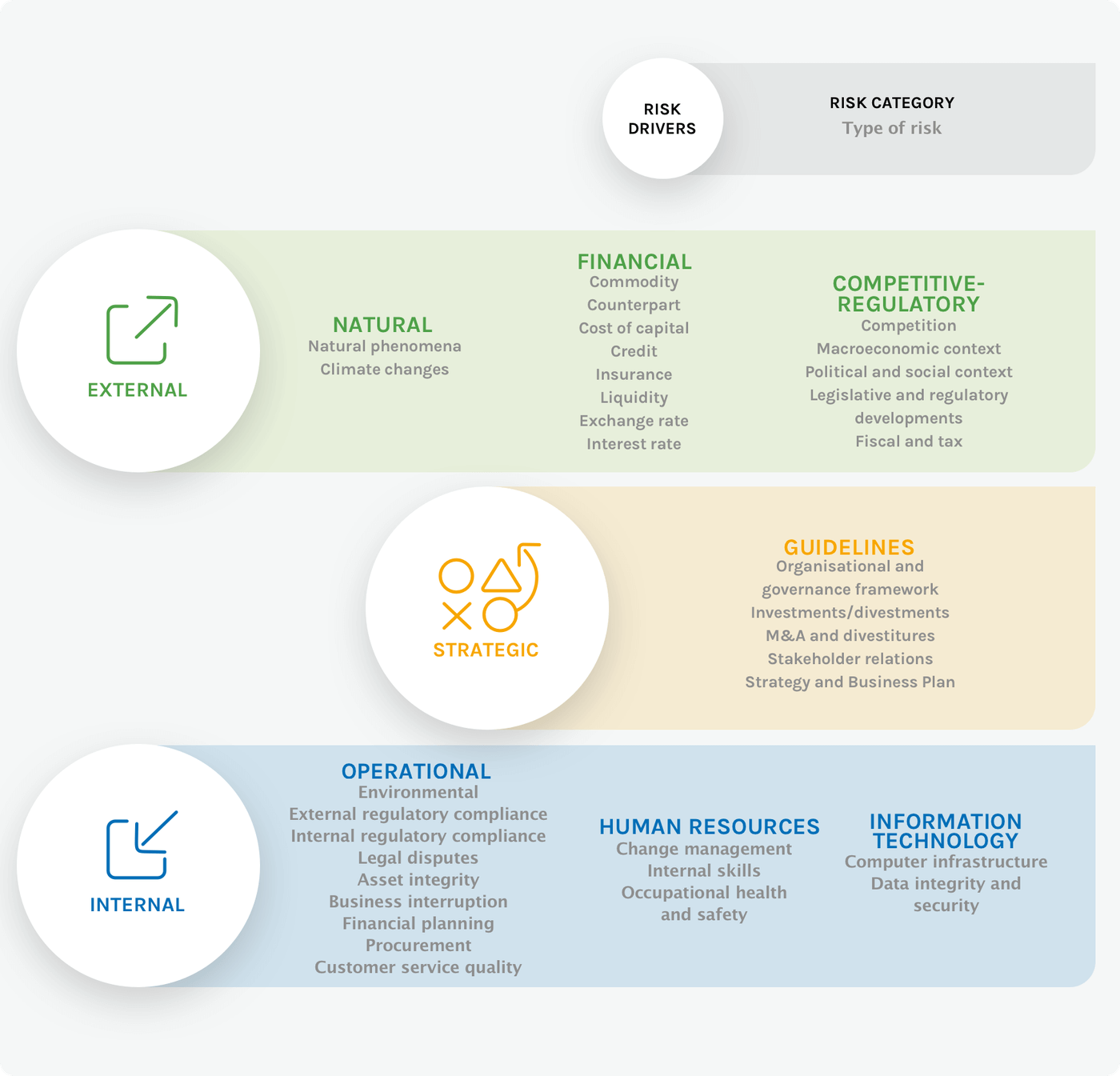
Enterprise Risk Management is the tool used by the Board of Directors and Management, through a structured process of analysis and management as regards the risk-opportunity factors to which the company is exposed, to enhance their ability to implement strategies and achieve business objectives via the conscious undertaking of risk.
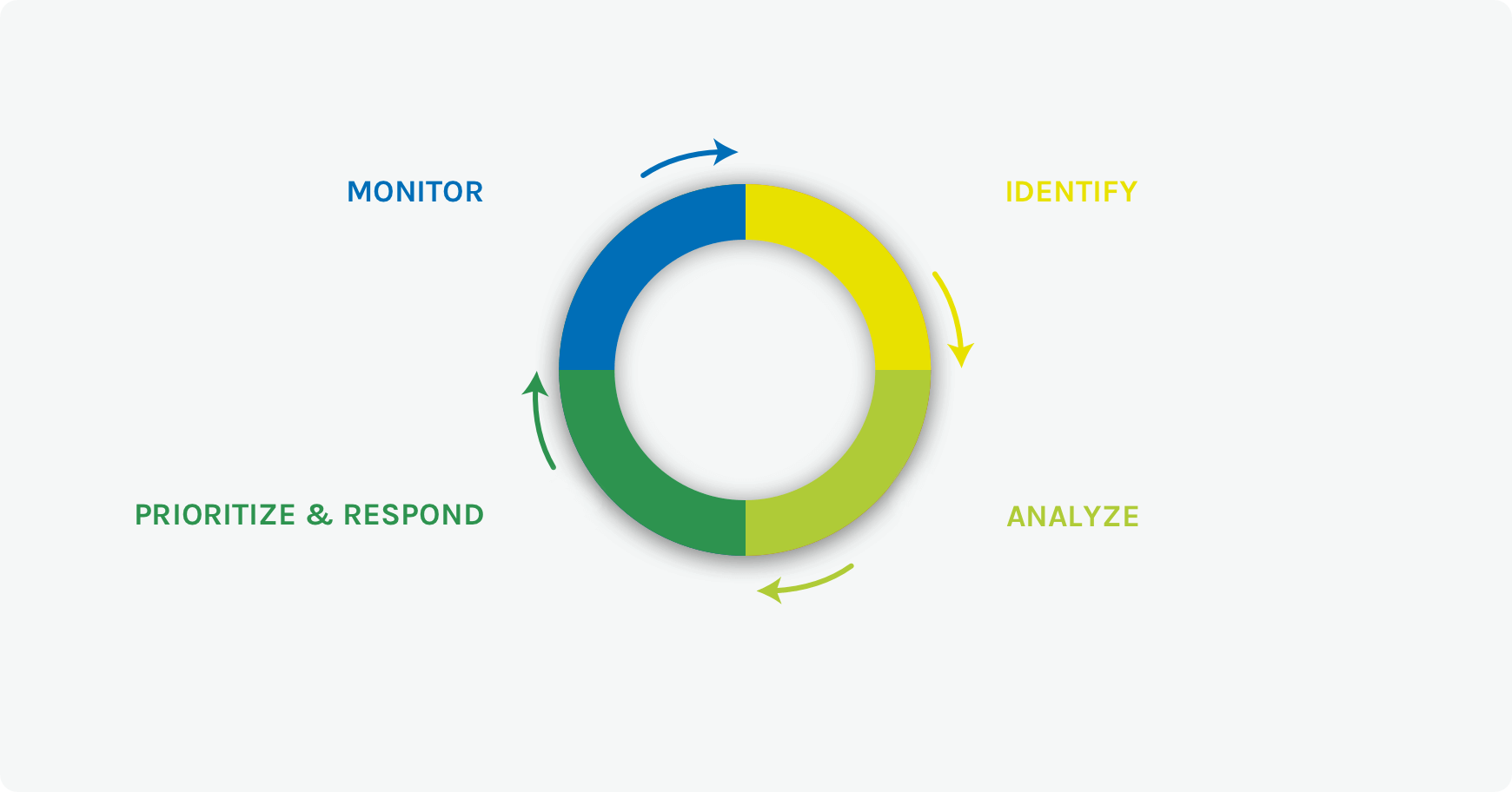
Identify the main risk/opportunity factors
Measure risks in terms of probability and impact on business performance and objectives
Identify the risk management strategies and the counter-measures to be put in place
Monitor the trend in risk profile and the effectiveness of established responses
Owing to the nature of its business, the Acea Group is potentially exposed to various categories of risk:
Among the risk factors to which the group is exposed it is important to highlight the potential effects deriving from unforeseeable natural phenomena (for example, earthquakes, floods and landslides) and/or cyclical or permanent climate changes affecting the networks and facilities managed by the Acea group companies. The former risk categories are dealt with by implementing structured asset governance tools, specific to each business area, as well as via projects, even at national level, aimed at enhancing the resilience of infrastructures in the various territories.
The remaining part of risks deriving from natural events is transferred by way of the group insurance plan.
The Group is exposed to various risks of a financial nature, with particular reference to the risk of fluctuating prices/volumes as regards the commodities subject to sale and purchase, interest rate risk and credit risk.
Commodity risk
Acea guarantees the analysis and measurement of exposure to commodity market risks, by interacting with Acea Energia’s Energy Management Unit and verifying compliance with the general Risk Management limits and criteria of the Commercial and Trading Sector, adopted by the same and by the Administration, Finance and Control Division.
Interest rate risk
The Acea group’s approach to managing interest rate risk, considering the asset structure and the stability of the group’s cash flows, has hitherto essentially been targeted at protecting funding costs and stabilising financial flows, with a view to safeguarding the margins and ensuring certainty of the said cash flows deriving from ordinary operations.
Liquidity risk
The Group’s liquidity risk management policy, for both Acea and its subsidiaries, involves the adoption of a financial structure which, in keeping with business objectives and within the limits defined by the Board of Directors, guarantees a suitable level of liquidity that can meet financial requirements, whilst maintaining an appropriate balance between maturity and composition of debt.
Credit risk
The credit risk management procedure within the Acea Group can be summarised in 3 macro stages:
The Acea group operates mostly in regulated markets; a change in the rules for the organisation of these markets, together with their characteristic requirements and obligations, can significantly impact the results and performance of operations.
These risks are mitigated via a careful monitoring of legislative and regulatory developments, discussions with the competent authorities and participation at association and institutional meetings, on the part of the appropriate business structures in synergy with the organisational controls put in place by the group. Moreover, the Acea Group, when supplying the services provided for its customers, pays careful attention to the expectations and decisions of its local and central institutional counterparties. In this respect, the principal factors influencing the Group’s performance include developments in the political/social and reference macroeconomic situation.
Strategic, or guideline, risks refer to a category of risk associated with the ineffective implementation of strategic actions decided by Top Management and/or the Corporate Bodies such as might compromise the achievement of set goals. This risk applies to both short-term (budget) and long-term (business plan) initiatives. Special attention is given to M&A transactions and the risks connected with the group’s potential inability to put in place an appropriate strategy in terms of mergers, acquisitions and disposals and/or failure to effectively handle the governance of the venture.
Acea Water services
The companies operating as part of the Integrated Water Service, which manage the entire drinking water and wastewater cycle, from collection of the natural resource up to its return to the environment, implement programmes, procedures and controls with a view to ensuring an adequate supervision in matters of compliance on the basis of characteristics identical to those of the business managed (potential exceedance of water potability limits due to source pollution, potential exceedance of limits for the discharge of treated wastewater into recipient bodies, occupational health and safety, characterisation and conformity of outgoing waste, etc.).
Acea Commercial
The Acea companies, in carrying out their sales activities on the electricity and gas Free Market, are exposed to the risk deriving from competition.
Furthermore, with reference to commodities, there is a risk connected with potential economic and financial damage due to the impact of changes in the macroeconomic context, including geopolitical changes, which would lead, in the first case, to a reduction in consumption on the part of business customers and, in the second case, to phenomena of extreme volatility in commodity prices, with negative consequences on trade dynamics.
Acea Electricity distribution
There are risks associated with projects at territorial level such as investments in network assets and the replacement of first generation electronic meters with second generation meters. The risks refer generically to the potential unknowns that may arise during implementation of such articulated and long-term projects; reference is therefore made to the possible critical issues associated with the work done on network infrastructures (authorisations from third-party bodies, procurement of materials, availability of firms, planning of activities, etc.).
Acea Environment
The waste treatment and waste-to-energy facilities are characterised by a high level of technical complexity, requiring them to be managed by qualified resources and organisational structures with a significant level of know how. The waste treatment plants and the related activities are benchmarked on specific waste characteristics. For this reason special procedures have been put in place for the inspection and control of incoming materials via spot checks and analytical sampling pursuant to current legislation.
Generation Segment
The main operational risks may concern property damage, personal injury and damage arising from information systems and external events. With a view to covering possible risks of an operational nature, Acea Produzione, since the start of its activity, has arranged to take out policies with leading insurance institutions for Property Damage, Third Party Liability and employee accidents. The Company pays particular attention to the ongoing training of its employees, in order to make field operators and all corporate management responsible for working safely, respecting the environment and ecosystems.
Risks associated with potential danger to workers’ health and safety could expose the group to significant costs for the reimbursement of damages, as well as detriment to the group’s reputation vis-à-vis public opinion and investors.
For years now Acea has followed a development path focused on the use of new technologies as a driving force for the operational efficiency, safety and resilience of its industrial assets. The main business processes are now all supported by the use of advanced information systems, implemented and managed by the Group's centralised departments to support the operations of the various companies. In this sense, the Group is therefore exposed to risks concerning the adequacy of the IT infrastructure to the current or future needs of the various businesses, as well as to the risks of unauthorised access. Acea manages these risks with the utmost attention through specific corporate compliance organisational structures, coordinated by specialised Group safeguards.
As far as the cyber security of systems, infrastructure, networks and other electronic devices is concerned, within the framework of services provided by the respective Group Companies, the current procedural and technological safeguards of the Companies in question are ensuring implementation of all actions necessary to come into line with the main sector cyber security standards at national and international level. In particular, a new strategy and new goals, technologies and processes in the areas of IT, OT and IoT have been defined, according to a holistic and unitary approach to security issues, prospectively more challenging.
For further information on all the risks and uncertainties to which the Acea Group companies are exposed, please read our 2023 Consolidated Financial Statement.
For further information on our central monitoring stations for particular risk categories, please read our 2023 Report on corporate governance and ownership structures.
Discover the latest news and initiatives of the Acea Group

Acea for World Energy Saving Day
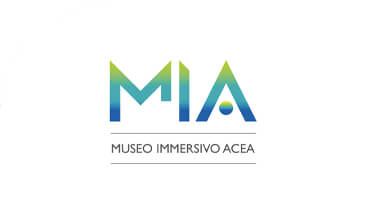
Visit the virtual museum about the history of the Acea Group

The channel for the commercial requests on land urbanisation

Acea turns the spotlight on the Rome Film Festival 2023
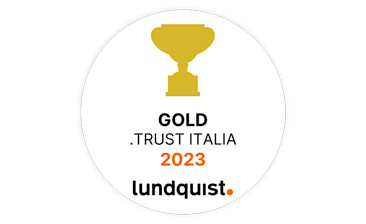
Acea is in the "Gold class" in the .trust research

Read more about our culture of inclusiveness